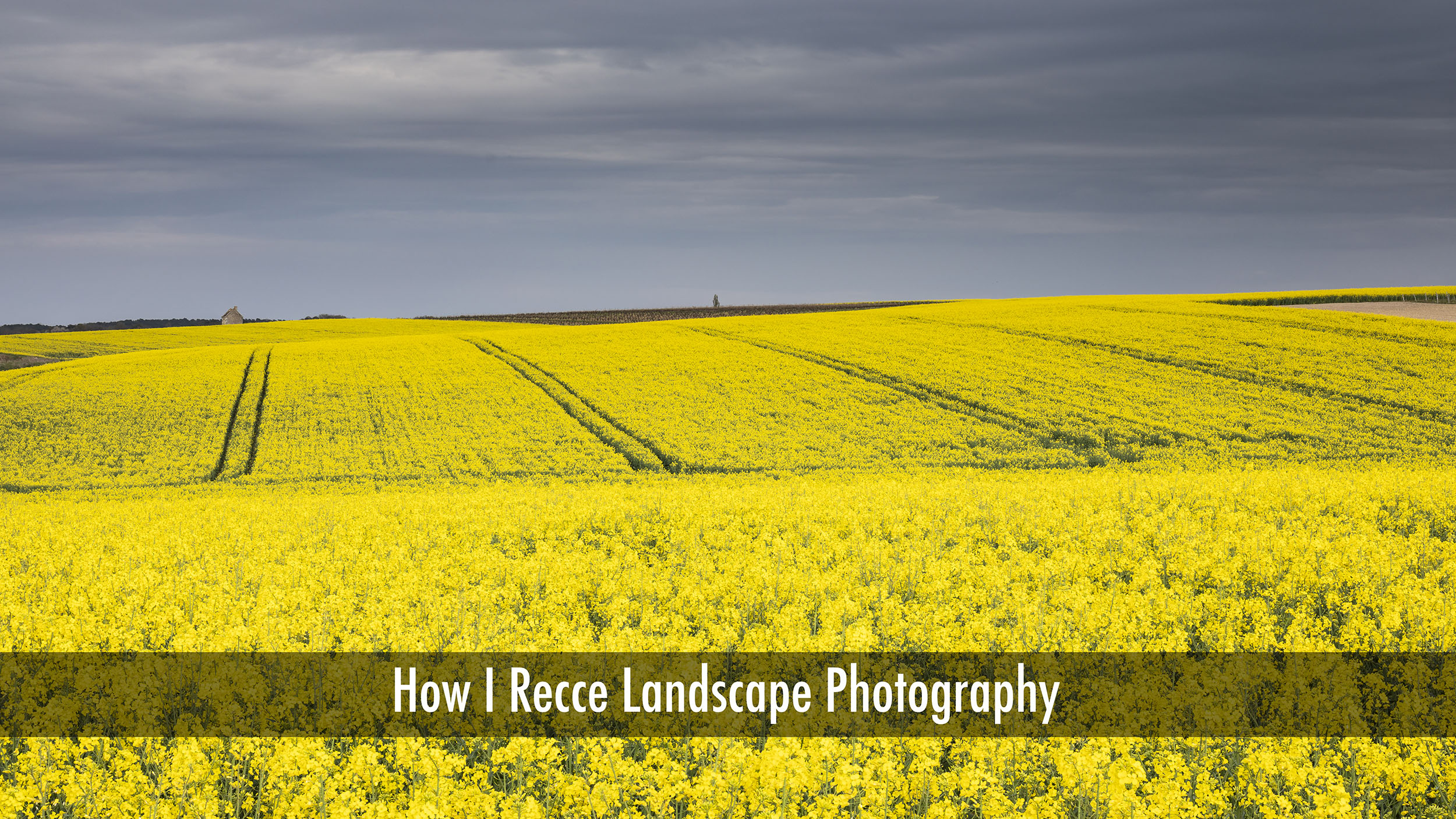
My latest YouTube vlog is entitled How I Recce Landscape Photography. It’s a warts-and-all look at what goes through my mind when I see a scene. What I am thinking with regards to the composition and the execution of the final image.
What you see here isn’t an image that I deem a success, but it’s useful to at least try and make a scene work. You just have to get out there at times and see if these things are worth pursuing or not.
Throughout the year, I offer photography tours and workshops in a variety of destinations around the world. If you’re interested in learning more from me to help you get the best out of your photography, then get in touch.
Knowing an area well makes a big difference. When you understand the land, you can spot hidden gems others might miss. For instance, in the Loire Valley in France, a quick drive can reveal a beautiful dip in a rapeseed field, just waiting for the right moment to photograph.
Look for natural lines, dips, and interesting features. A slight dip in a field or a line of tractor tracks can add depth. Sometimes, a fleeting scene—like a patch of emerging sunlight—can turn into a stunning shot if caught at the right time.
Many great photos come from spontaneous moments. During a drive, keep your eyes open and pay attention. You never know when a landscape element will line up perfectly for your shot. Always stay alert and ready to shoot.
Early morning at dawn or late afternoon at sunset provides soft, warm light that makes landscapes pop. In some cases, after a rain shower can brighten colors, giving the scene a fresh look. Planning your outings around sunrise or sunset is a good rule of thumb.
Rain can transform a dull scene into something vibrant, especially in fields where colors become more vivid. Clouds can add drama or soften sunlight, creating mood and atmosphere in your photos.
Keep a sturdy tripod, a variety of lenses, and filters handy. A wide-angle lens helps capture large scenes, while a telephoto zoom allows you to pick out details from afar. Be prepared for rain or wind with weather protection gear.
Sometimes, a small change in your position can make all the difference. For example, climbing a gentle slope or standing on a low wall can give a better perspective. Clambering up a field’s edge might seem tricky, but it’s often worth it for a great shot.
Always be careful not to trample crops or disturb the land. Your goal is to capture beauty, not damage it. Use natural paths or avoid walking through the most delicate parts of the scene.
Leading lines guide the viewer’s eye into the photo. Tractor tracks or a stream in the scene can act as visual guides. When scouting, take quick test shots to see how these elements work together.
Check where the horizon falls. If the dip in the land is in the bottom third of your shot, the scene may feel unbalanced. Moving your camera higher or lower could solve this.
A wider lens captures more of the scene but might include distractions. A longer zoom, like a 100-400mm lens, helps you focus on specific parts of the landscape, such as details or distant features. Adjust your focal length to fit your scene.
Use focus stacking to keep all parts sharp. For example, one shot focused on the foreground, another on distant hills, then combining them gives a detailed, sharp image throughout.
Rain, muddy ground, or uneven terrain can make shooting difficult. Protect your gear with covers and be cautious when walking, especially on slippery slopes.
If the scene doesn’t look right or weather turns bad, don’t force it. Sometimes, patience pays off and you wait for better light or conditions.
Not every scene will be perfect immediately. Waiting for the right moment or a change in weather can make your photo stand out even more.
Great landscape photography depends on keen observation, good planning, and technical know-how. Spend time exploring, look for natural lines and focal points, and wait for the right moment. Sometimes, a fleeting scene or a small change in perspective makes all the difference. Get out there, experiment, and let your landscape images tell a story. Whether it’s a field of rapeseed in France or a mountain vista, remember: the best photos happen when you pay attention to the scene and are willing to wait for the perfect shot.